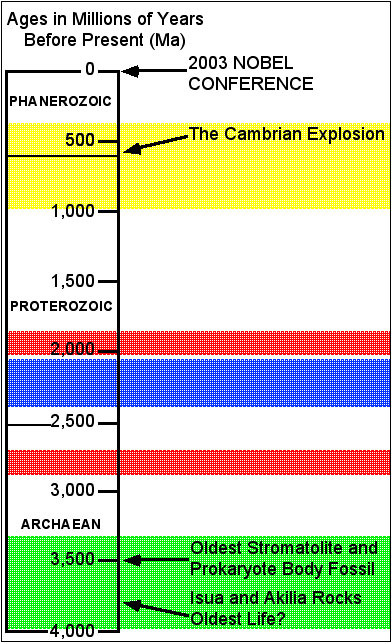
The domains of life—ignoring viruses at the moment—can be divided between two significantly different cell types. Archaea (or Archaebacteria) and Eubacteria, the most ancient domains, are prokaryotes. These cells are much smaller, typically 0.2 to 10 micrometers in diameter, lack distinct organells, and lack a membrane-bound nucleus packaging the genetic information. Larger animals and plants and some specialized microorganisms are composed of eukaryotic cells. These may be hundreds of micrometers in diameter, contain specialized membrane-bound organelles such as mitochondria and chloroplasts, and have the genetic information stored in a central nucleus.
The photo above is from a microscopic slide showing spherical prokaryotic cells (eubacterium?) growing off of a eukaryotic archaeocyath sponge. From the Early Cambrian (~520 Ma) of Nevada.
Quick Links to: Introduction Oldest Rocks on Earth Oldest Fossils Prokaryotes vs. Eukaryotes Oldest Eukaryotes Oxygenation of the Atmosphere Ediacaran Fauna Snowball Earth Oldest Skeletons Pre-Cambrian/Cambrian Boundary Links for more information
